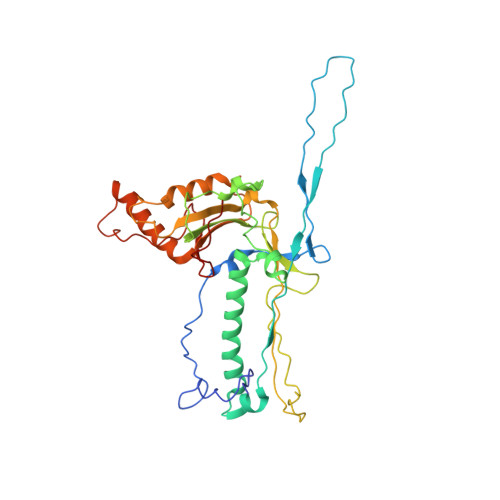A new topology of the HK97-like fold revealed in Bordetella bacteriophage by cryoEM at 3.5 A resolution.
Zhang, X., Guo, H., Jin, L., Czornyj, E., Hodes, A., Hui, W.H., Nieh, A.W., Miller, J.F., Zhou, Z.H.(2013) Elife 2: e01299-e01299
- PubMed: 24347545
- DOI: https://doi.org/10.7554/eLife.01299
- Primary Citation of Related Structures:
3J4U - PubMed Abstract:
Bacteriophage BPP-1 infects and kills Bordetella species that cause whooping cough. Its diversity-generating retroelement (DGR) provides a naturally occurring phage-display system, but engineering efforts are hampered without atomic structures. Here, we report a cryo electron microscopy structure of the BPP-1 head at 3.5 Å resolution. Our atomic model shows two of the three protein folds representing major viral lineages: jellyroll for its cement protein (CP) and HK97-like ('Johnson') for its major capsid protein (MCP). Strikingly, the fold topology of MCP is permuted non-circularly from the Johnson fold topology previously seen in viral and cellular proteins. We illustrate that the new topology is likely the only feasible alternative of the old topology. β-sheet augmentation and electrostatic interactions contribute to the formation of non-covalent chainmail in BPP-1, unlike covalent inter-protein linkages of the HK97 chainmail. Despite these complex interactions, the termini of both CP and MCP are ideally positioned for DGR-based phage-display engineering. DOI: http://dx.doi.org/10.7554/eLife.01299.001.
Organizational Affiliation:
California NanoSystems Institute, University of California, Los Angeles, Los Angeles, United States.















